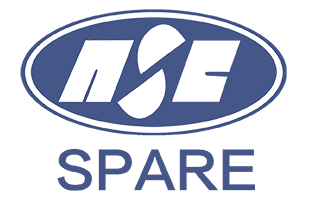- Reinforcement Material Transport System: such as yarn racks, felt laying devices, yarn holes, etc.
- Resin Impregnation: The direct groove impregnation method is most commonly used. During the entire impregnation process, the fibers and felts should be arranged very neatly.
- Preforming: The impregnated reinforcement material passes through the preforming device and is carefully transmitted in a continuous manner to ensure their relative positions, gradually approaching the final shape of the product, extruding excess resin, and then entering the mold for molding and curing.
- Mold: The mold is designed under predetermined conditions. According to the resin curing heat release curve and the friction performance between the material and the mold, the mold is divided into three different heating zones, and its temperature is determined by the performance of the resin system. The mold is the most critical part of the pultrusion process, with a typical length range of 0.6-1.2m.
- Traction Device: The traction device itself can be a caterpillar-type puller or two reciprocating clamping devices to ensure continuous movement.
- Cutting Device: The profile is cut to the required length by an automatically synchronized moving cutting saw.
The function of the molding die is to realize the compacting, shaping, and curing of the blank. The section size of the mold should consider the molding shrinkage rate of the resin. The mold length is related to the curing speed, mold temperature, product size, extrusion speed, reinforcement material properties, etc., generally between 600-1200mm.
The surface finish of the mold cavity should be high to reduce friction, extend service life, and facilitate demolding. Electric heating is usually used, and microwave heating is used for high-performance composite materials. There should be a cooling device at the mold inlet to prevent premature solidification of the adhesive.
The impregnation process mainly controls the relative density (viscosity) of the adhesive and the impregnation time. Its requirements and influencing factors are the same as those of prepreg.
The curing and forming process mainly controls the molding temperature, mold temperature distribution, and the time for the material to pass through the mold (pultrusion speed). This is a key process of the pultrusion molding process. During the pultrusion molding process, a series of physical, chemical, and physicochemical complex changes occur when the prepreg passes through the mold, which is still not very clear.
Generally speaking, according to the state of the prepreg passing through the mold, the mold can be divided into three zones. The reinforcement material passes through the mold at a constant speed, while the resin is different. At the mold inlet, the behavior of the resin is similar to that of a Newtonian fluid. The viscous resistance between the resin and the inner surface of the mold slows down the forward speed of the resin and gradually recovers to the level of the fiber with the increase of the distance from the inner surface of the mold.
During the process of advancing through the mold, the resin undergoes cross-linking reaction due to heating, the viscosity decreases, the viscous resistance increases, and it begins to gel and enters the gel zone. It gradually hardens, shrinks, and separates from the mold. The resin and the fiber move forward uniformly at the same speed. In the curing zone, it continues to cure under heating, ensuring that the specified degree of cure is reached when it comes out of the mold. The curing temperature is usually higher than the peak of the exothermic peak of the adhesive and matches the temperature, gel time, and traction speed. The temperature in the preheating zone should be lower, and the control of the temperature distribution should make the exothermic peak of curing appear in the middle and rear of the mold, and the release point should be controlled in the middle of the mold.
The temperature difference in the three zones should be controlled within 20-30℃, and the temperature gradient should not be too large. The effect of the exothermic reaction during curing should also be considered. Usually, three pairs of heating systems are used to control the temperature in each zone.
Traction force is the key to ensure smooth demolding of the product. The magnitude of the traction force depends on the interfacial shear stress between the product and the mold. The shear stress decreases with increasing traction speed and appears in three peaks at the inlet, middle, and outlet of the mold.
The peak at the inlet is generated by the viscous resistance of the resin at that point. Its magnitude depends on the properties of the resin viscous fluid, the temperature at the inlet, and the filler content. The resin viscosity decreases with increasing temperature in the mold, and the shear stress decreases. As the curing reaction proceeds, the viscosity and shear stress increase. The second peak corresponds to the release point and decreases significantly with increasing traction speed. The third peak is at the outlet, generated by the friction between the cured product and the inner wall of the mold, and its value is relatively small.
Traction force is important in process control. To achieve a smooth product surface, it is required that the shear stress at the release point (second peak) is small and the product is released from the mold as early as possible. Changes in traction force reflect the reaction state of the product in the mold and are related to fiber content, product shape and size, release agent, temperature, traction speed, etc.
